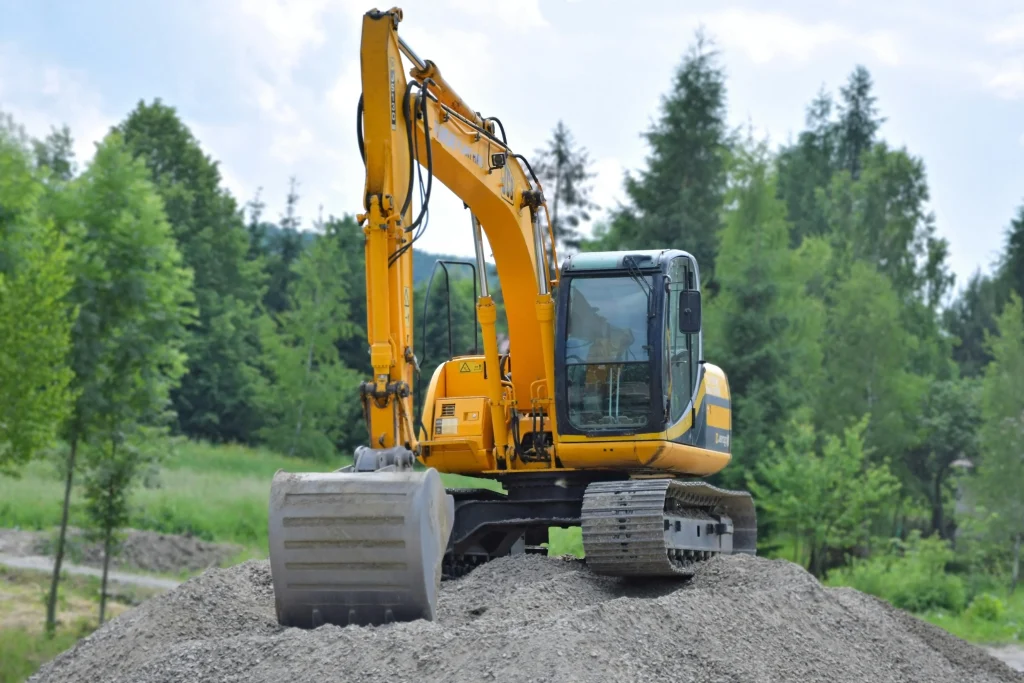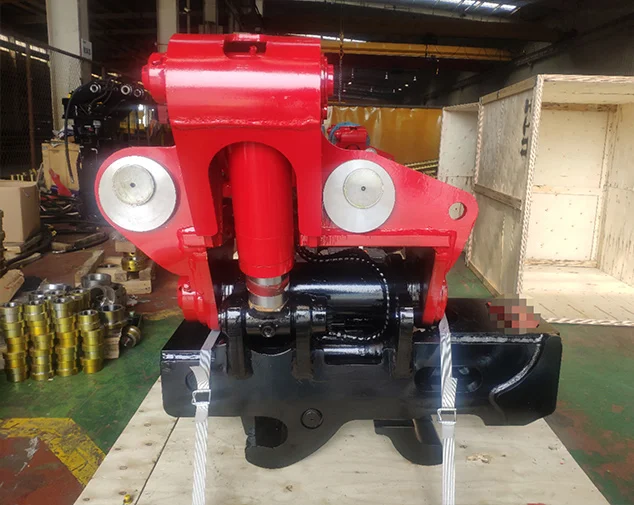Excavator Attachment Considerations in Choosing Between Backhoe and Excavator
Backhoes mix a loader and digger for handy, small jobs. Excavators bring big power and long reach for tough tasks. Excavators spin 360° and work with many attachments, making them great for huge projects. Backhoes shine in city settings. Pick based on your job’s size, ground type, and need for accuracy.
What Are the Functional Differences Between Backhoes and Excavators?
How Do Their Core Designs Influence Their Operational Capabilities?
Backhoes and excavators look different and work differently. A backhoe has a front loader and a rear bucket for digging. It’s a two-in-one machine, good for medium jobs. An excavator has a cab that spins all the way around, with a bendy arm and boom. It’s built for heavy digging and breaking stuff down.
Excavators dig deeper and lift more because of their strong hydraulic systems. They’re perfect for big construction sites where power and precision matter. Backhoes are more flexible for smaller or city jobs. Their small size lets them do different tasks without needing another machine.
In What Types of Projects Are These Machines Typically Used?
Backhoes are great for utility work, fixing roads, or small digging jobs where moving around easily is key. The front loader moves materials, and the rear bucket digs trenches or shallow holes.
Excavators rule in moving earth, mining, tearing down buildings, or deep foundation work. With lots of excavator attachment options, they handle special jobs like sorting scrap or breaking down structures.
How Do They Compare in Terms of Mobility, Reach, and Versatility?
Backhoes move well because they have wheels. They can drive between job sites without a trailer. Excavators, especially those with tracks, stay steady on rough ground. Their long arms reach over obstacles or far away, which is awesome for deep trenches or high demolition.
Why Are Excavator Attachments Crucial for Job-Specific Performance?
How Do Attachments Impact Equipment Efficiency and Functionality?
Excavator attachments turn your machine into a tool for specific jobs. For example, a hydraulic breaker lets you smash concrete without switching machines. This boosts work speed and cuts downtime between tasks.
Some attachments, like Kingho’s grapples, let you swap tools in just 15 minutes. This makes your work faster and smoother.
Which Excavator Attachments Are Most Commonly Used on Construction Sites?
Here are some popular excavator attachments:
- Hydraulic Breakers: Break up rocks or concrete.
- Grapples: Sort debris or move materials.
- Pulverizers: Used in demolition to pull rebar from concrete.
- Tilt Buckets: Great for shaping slopes or cleaning ditches.
- Quick Hitches: Make swapping attachments quick and easy.
Kingho’s hydraulic quick hitch uses Q345 manganese plate steel and 42CrMo alloy steel pins. These are strong and resist rust, perfect for frequent attachment changes.
What Factors Should You Consider When Choosing an Excavator Attachment?
Check if your excavator’s size matches the attachment’s needs. Look at hydraulic flow—some attachments need more juice to work well. Think about what you’re moving, like rocks or scrap metal. Also, consider the work site—tight spaces or open fields change what you need.
What Does Kingho Offer in Terms of Excavator Attachment Solutions?
Kingho makes top-notch excavator attachments for jobs in construction, mining, logistics, or car recycling. With over 10 years of research, they build smart front-end tools that make your machine more versatile and tough, even in harsh conditions.
Kingho’s excavator attachments include steel grabbers, eagle shears, and car dismantling pliers. These use high-strength Q690 steel or NM500 wear-resistant alloys for durability.
How Can You Match the Right Excavator Attachment to Your Equipment?
What Should You Know About Compatibility Between Attachments and Machines?
For the best results, make sure your excavator’s weight class fits the attachment. For example, Kingho’s log grapple needs at least 120L/min hydraulic flow and 210 bar pressure. If you want it to spin, you need a third-line hydraulic setup. Custom connectors can help if brackets don’t match your machine.
Can These Excavator Attachments Be Integrated With Backhoe Loaders Too?
Most excavator attachments are made for excavators because backhoes have weaker hydraulic systems. You can use some on backhoes, but they might not spin as much or grab as hard. Backhoes just don’t have the same power as excavators.
When Should You Choose an Excavator Instead of a Backhoe?
How Do Site Conditions Influence Equipment Choice?
In tight city spots, like for utility fixes, a backhoe is better. It’s small and can move itself around. But for rough ground or deep digging past 14 feet, an excavator is the way to go. Its tracks and long reach handle tough terrain and big jobs.
Are There Specific Scenarios Where Digging Power Is More Important Than Mobility?
Yes, deep trenching for foundations needs an excavator’s strong reach and power. Heavy tools like Kingho’s eagle shears use double oil cylinders and Swiss motors for full-angle spins. These need the steady base only a tracked excavator gives.
Does Job Complexity Require Greater Excavator Attachment Flexibility?
For tricky jobs like dismantling cars, you need special tools. Kingho’s car dismantling shear has tough blades and wear-resistant teeth. These are made for recycling cars, where you need precise, strong excavator attachments.
Is It More Cost-Efficient To Use Excavator Attachments With Backhoes Or Excavators?
How Does Initial Investment Compare To Long-Term Gains?
Excavators cost more upfront but save money over time. Their excavator attachments let them do many tasks, so you need fewer machines. This cuts costs for upkeep and boosts how much each machine does.
What About Maintenance And Downtime Risks?
Smart features, like Kingho’s anti-dust bearings, make attachments last longer. They protect moving parts, so you don’t stop work for repairs as often. Backhoes might need more fixes if you use heavy excavator attachments, which can add hidden costs.
Can Strategic Excavator Attachment Choices Boost ROI Further?
Yes, picking multi-use tools like tilt buckets or clamshell buckets lets you do more without switching machines. Kingho’s clamshell buckets use NM500 wear-resistant steel and double-cylinder rods. These are tough and work well with all kinds of materials, like sand or gravel.
What Equipment Strategy Should Professionals Adopt Based on Project Scope?
Which Specialized Tasks Benefit Most From Certain Kingho Excavator Attachments?
Here’s what works best:
- Scrap yards: Use orange peel grapples for sorting.
- Demolition sites: Eagle shears for breaking stuff down.
- Forestry jobs: Log grabs with NM400 alloy steel and 360° spins.
Each Kingho excavator attachment is built for tough jobs where safety and speed are key.
How Can You Optimize Your Fleet Using Compatible Tools From Kingho?
Using Kingho’s double-lock quick hitch across your machines saves time. It works with different sizes and uses NM400 steel with HALLITE seals. This keeps connections tight, even in high-pressure jobs.
FAQ
Q1: Can I install advanced excavator attachments like grapples on my existing backhoe?
A: Yes, but check your backhoe’s hydraulic flow and pressure. They might not match the power needed for excavator attachments, so performance could be weaker than on an excavator.
Q2: What’s the most versatile excavator attachment to buy first?
A: A quick hitch is a great start. It lets you switch between buckets, breakers, or grapples fast without extra tools.
Q3: How do I know if my excavator can handle heavy-duty shears?
A: Make sure your excavator’s weight (like 20–36 tons) and hydraulic output (≥120L/min at 210 bar) match the shear’s needs. Check for matching brackets or get custom adapters.



